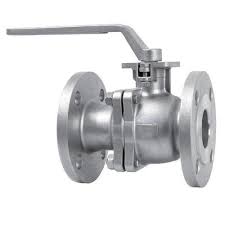When it comes to flow control, ball valves are among the most popular choices. They allow for easy on and off control and can be used in many different applications. If you are looking to learn more about ball valves and how they work, this post is for you. In this article, we will explore ball valves in-depth and discuss the benefits they offer over other types of valves.
How Ball Valves Work:
Ball valves work by rotating a ball with a hole through the center inside a valve body. When the ball is in the closed position, the hole is perpendicular to the flow of fluid, blocking it off. When the ball is rotated 90 degrees, the hole is parallel to the flow, allowing fluid to pass through the valve. The simplicity of this design allows for easy operation and cleanup, making ball valves a popular choice.
Types of Ball Valves:
Ball Valve come in a variety of types, including two-piece, three-piece, top-entry, and flanged-end valves. Two-piece valves are the most common and feature two parts that screw together. Three-piece valves feature three parts that can be easily taken apart for cleaning. Top-entry valves allow access to internal components without removing the entire valve from the pipeline, making maintenance much easier. Flanged-end valves are ideal for larger pipes and can be bolted directly into place.
Advantages of Ball Valves:
One of the greatest advantages of ball valves is their versatility. They can handle a wide range of temperatures and pressures, making them ideal for use in a variety of applications, from simple residential plumbing to industrial applications like chemical processing. They are also durable and can withstand frequent use without wearing out. Additionally, ball valves are more compact than other types of valves, making them a great choice when space is limited.
Disadvantages of Ball Valves:
While ball valves have many advantages, they do have a few disadvantages. One is that they can be more expensive than other types of valves, particularly for larger sizes. Additionally, ball valves are not typically recommended for use in conditions where fluid needs to be regulated rather than simply turned on and off. This is because the hole in the ball is either open or closed, allowing for full flow or none at all. This can lead to instability in the flow when trying to regulate.
Maintenance and Care of Ball Valves:
Proper maintenance and care of your ball valves will ensure that they last a long time and operate as they should. Regular cleaning is important to prevent buildup that can impact valve operation. Lubricating the valve stem will help ensure smooth operation. Additionally, it’s important to use the correct sealing materials to prevent leaks.
In short:
Ball valves are a popular choice for flow control due to their simple design, durability, and versatility. They can be used in a wide range of applications and are easy to operate and clean. While they do have a few disadvantages, their many benefits make them a great choice for many applications. By knowing how ball valves work and keeping up with proper maintenance, you can ensure that your ball valves will last and operate efficiently.



